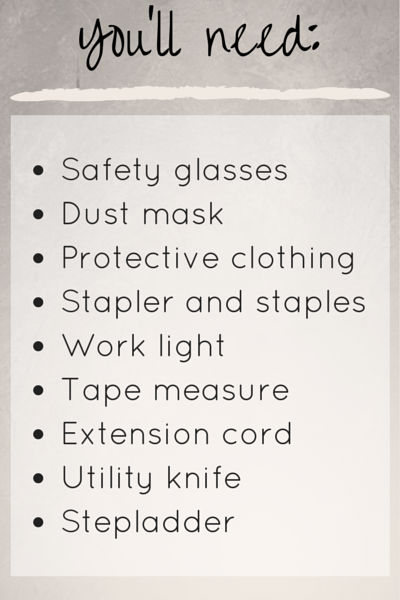A basement can be a bonus when you're house hunting. There are numerous possibilities for the extra space that can include storage space, office space and
living space. But, basements are usually cold, dark and
sometimes dank spaces.
Keep reading for tips on the best ways to insulate your basement to transform it from a cold unusable space to a warm and functional room.
Insulating the basement walls
Because basements are generally underground, they are cool and damp and can account for significant heat loss from your home. Insulation allows you to make your basement more comfortable by limiting the escape of heat and
keeping moisture out.
Insulating your basement walls is a simple solution to a problem of heat loss. If you're going to insulate your walls on your own, check with your town or city's building department to make sure you are doing it up to code. The first thing you'll need to figure out is the thermal resistance of your insulation, or its R-Value. There are five zones in the United States -- the farther north the zone, the higher the thermal resistance your insulation should provide. Most of the United States falls between R-5 and R-10.
 There are three different kinds of insulation to choose from:
There are three different kinds of insulation to choose from: - Blanket insulation: the most common type of insulation comes in rolls, blankets or batts and is made of flexible fibers (usually fiberglass).
- Rigid foam board insulation: made of foam boards and can keep water vapor in its gaseous state, preventing it from condensing on the wall. Foam board must be covered with a fire barrier.
- Loose-fill insulation: uses small particles of fiber or foam and is installed by pouring or blowing. The tricky part of installation is ensuring proper coverage and even thickness.
Exterior wall insulation
Another method insulating the exterior side, which is impractical in an existing home. If you're building a new home, you can easily take extra steps to insulate the exterior walls of your basement.
To insulate your exterior walls that are below grade, use a rigid foam board directly against your foundation. There's no need to fasten those boards to your home--they will be held in place with the back fill. If any part of your basement walls will be above grade, special fasteners are available.
Insulating the exterior of the basement will: - Minimize thermal bridging and reduce heat loss
- Protect the damp-proof coating from damage
- Provide some protection against moisture intrusion
Benefits of insulating basement walls
Not only does insulating your basement walls keep heat in your home, it will keep money in your wallet. Instead of having to crank up your thermostat to stay warm when you use your basement, you'll already have the barrier from the cold you need. Once your basement is properly insulated, you should start seeing you energy costs decreasing and an increase in the amount of time you spend using your basement.
Now that you've got your basement warmed up, what will you do with it? Perhaps a man cave for
football Sundays or maybe a new home
gym setup? It's time to take advantage of your basement and all that extra space.